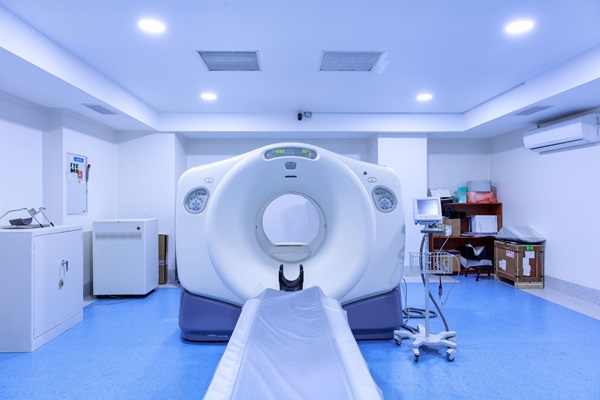Visit Your Primary Care Physician for Diabetes Treatment

Contrary to what some may believe, diabetes requires professional treatment since it is a chronic condition marked by high blood sugar. With treatment, patients can manage their diabetes and reduce its impact on their lives. A primary care physician, or PCP, will guide patients through diabetes treatment, connecting them with specialists and using treatment strategies to manage symptoms.
Understanding diabetes
The pancreas produces a hormone called insulin, with which the body converts sugar into energy. Diabetes results when the pancreas cannot make enough insulin to control blood sugar levels or the body does not process insulin correctly. There are several types of diabetes, but each involves blood sugar (or glucose) levels that are too high. Some of the most common diabetes types include:
Type 1 diabetes: Type 1 is when the body does not make enough insulin, or even none at all. It is also known as juvenile diabetes because it often develops in childhood and adolescence.
Type 2 diabetes: Type 2 is when the body cannot make enough insulin to manage glucose levels. Alternatively, this type of diabetes may also refer to patients with insulin resistance, meaning their cells are not responding to insulin as intended.
Gestational diabetes: As the name suggests, gestational diabetes is when a patient develops diabetes during pregnancy. This type of diabetes goes away after delivery, but it is a risk factor for later developing Type 2 diabetes.
What is prediabetes?
If a patient is on the road to developing Type 2 diabetes, they may be diagnosed with prediabetes. This is a condition in which the patient exhibits blood glucose levels that are very high but not high enough to be classified as diabetes. Prediabetic patients may lower their glucose levels with treatment, thereby preventing Type 2 diabetes.
Diabetes complications
Like any medical condition, diabetes should be treated as early on as possible. For reference, the Centers for Disease Control and Prevention (CDC) has linked difficulty healing, heart disease, kidney disease, foot problems, nerve damage, hearing and vision loss, and even mental health problems to untreated diabetes. Patients can often prevent these complications with the help of primary care doctors and specialists.
A primary care physician’s role in treating diabetes
For most patients, their primary care physician, or PCP, will be the one to uncover high blood sugar levels and diagnose diabetes. (The PCP may be an internal medicine doctor or another healthcare practitioner, such as a nurse practitioner.) Once diabetes has been diagnosed, the PCP will develop a treatment plan to help the patient get their diabetes under control.
If the patient has difficulty with treatment or if their diabetes does not respond to it, the PCP may recommend them to a specialist for help. The PCP will still serve as the main coordinator of the patient’s diabetes care team, working with specialists to develop a more strategic and aggressive treatment plan. Most patients benefit from a mixture of the following diabetic treatment strategies:
Blood sugar monitoring
The first step in diabetes treatment is to begin monitoring one’s blood sugar to determine the most effective treatment strategies. Once the patient starts treatment, this monitoring will reveal whether their treatment plan is working.
Blood sugar monitoring is usually done with a diabetic glucose monitor, for which the patient must prick their finger to get a blood sample. Most patients benefit from checking their glucose levels daily, but this varies on a patient-by-patient basis. A PCP may recommend checking glucose levels multiple times a day or every other day.
Anti-diabetic medications or insulin
Anti-diabetic medications, such as metformin, help patients who still produce some levels of insulin to manage their diabetes. However, these medications are not always enough. Some patients require synthetic insulin to manage their diabetes successfully.
Exercise
According to the Cleveland Clinic, regular exercise makes insulin more effective and combats insulin resistance. Exercise is also known to lower the risk of heart disease and other complications of diabetes. Many primary care physicians will, therefore, recommend incorporating regular exercise into a diabetic treatment plan.
Dietary changes
Making dietary changes helps diabetic patients manage their glucose levels. This will typically involve eating less sugar and starches. A primary care physician may ask that the patient count calories to ensure they take the correct amount of insulin in relation to what they eat.
Visit a primary care provider
If you have or suspect that you have diabetes, it is recommended to visit your primary care doctor for treatment. With proper care, patients may manage their diabetes and prevent complications. Call our New Caney office to learn more about how we can help with your diabetes treatment plan.
Request an appointment here: https://tx-urgentcare.com or call Texas Urgent Care & Imaging Center at (832) 941-1894 for an appointment in our New Caney office.
Check out what others are saying about our services on Yelp: Primary Care in New Caney, TX.
Recent Posts
X-rays are popular tools medical professionals use to diagnose a wide range of health conditions quickly and safely. They allow these professionals to see inside the body without invasive procedures, making them invaluable in urgent and primary care settings. Whether identifying fractures, monitoring chronic conditions, or detecting abnormalities, X-rays are critical in ensuring timely and…
A CT scan, or computed tomography scan, is a diagnostic tool that provides detailed images of the body’s internal structures. This non-invasive procedure helps medical professionals diagnose and monitor various conditions, from injuries to chronic illnesses. Knowing what to expect during a CT scan can ease concerns and prepare patients for a smooth experience.A CT…
If you work in public transportation, you may need to have a DOT drug screening. The Department of Transportation (DOT) regulates this test and requires it for you. You might be wondering what this test is like. Keep reading to learn more.Congress passed the Omnibus Transportation Employee Testing Act in 1991. Congress knew that the…
Walk-in clinic provide convenient, accessible health care for non-emergency medical needs, making it an ideal choice when immediate attention is necessary. Understanding when to visit a clinic can help patients save time, avoid unnecessary trips to the emergency room, and receive quality care for their health concerns. These clinics handle various issues, offering fast, professional…


